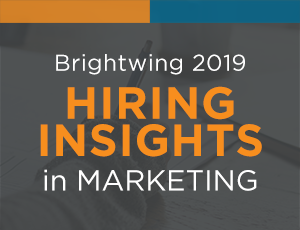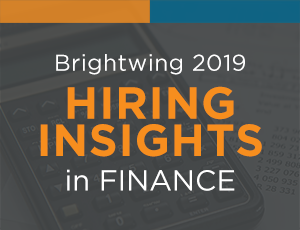Category: Hiring Best Practices
3 Recruiting Insiders on Urgency in Hiring
contact us: Please enable JavaScript in your browser to complete this form.I am a: *Job SeekerEmployerName *FirstLastEmail *Phone *Company *What kind of job are you seeking? *Information TechnologyEngineering & DesignFinance & AccountingOperationsOtherMessageMessageSubmit Here are tips from 3 Brightwing talent consultants on what it takes to meet urgent needs in this candidate-driven market… 1. How... Continue reading ...Why You’re Not Closing Job Offers …and 5 Ways to Fix It
There are plenty of obvious things that make a job offer attractive. Competitive or above-market pay, bonus opportunities, and benefits all play a part. And it’s all the better when the compelling compensation package comes from an organization with a strong employer brand. But there are also subtle dynamics that attract and repel…
Continue reading ...Does Employer Brand Outweigh …Comp Packages?
Our brains are designed to compute split-second impressions of people and things. We then drop those impressions into one of many preset categories as a way to shortcut decision-making. In the wild, for example, bright colors usually mean poison. We could take the time to work out the logic every time…
Continue reading ...4 out of 5 Employees May Switch Jobs in 2019: What Does That Mean for Your Organization?
Want to take these insights with you? Download the PDF. Brightwing Talent Insights Survey Results 2019 Brightwing recently invited its talent network to participate in a survey to gain an inside perspective of the candidate market. For employers, this is important data to help them understand what candidates are looking for in a…
Continue reading ...Will Your Marketing Team Thrive or Fail Under These 3 Trends?
Have you seen our recent 2019 Hiring Insights in Marketing yet? We’ve got the research you need to prepare for your 2019 hiring initiatives. Be sure to check it out, then rejoin us back here. You’ve seen first-hand the exponential growth in the digital marketing industry. Unfortunately, the high demand for marketing talent who…
Continue reading ...Research on the Engineering Talent Shortage Says We Should Start Worrying
Did you check out our recent 2019 Hiring Insights in Engineering yet? We’ve got the research to prepare for your 2019 hiring initiatives. Go check it out, then meet us back here. The talent shortage. A long-time buzzword in the engineering and manufacturing sectors – one you’d be tempted to tune out by…
Continue reading ...2019 IT Salaries: Do Your Competitors Have Deeper Pockets?
Did you check out our recent 2019 Hiring Insights in IT yet? We’ve got the research you need to prepare for your 2019 hiring initiatives. Go ahead and take a look – we’ll be right here waiting when you get back. Surveys tell us that less than half of all tech professionals are satisfied…
Continue reading ...Brightwing 2019 Hiring Insights in Marketing
Did you know that an overwhelming 97% of marketers are reportedly open to new opportunities? Most of them aren’t actively looking, but that number is still a massive cause for concern. Employers are already battling with a marketing talent shortage in order to fill new positions, let alone backfill roles that people leave. This…
Continue reading ...Brightwing 2019 Hiring Insights in Finance & Accounting
You don’t have to be an accountant to do the math: The BLS reports that 5.5 million jobs in America are currently unfilled due to lack of talent. Meanwhile, they project a 10% increase in the number of finance and accounting occupations by 2026. It’s no surprise, then, that employers can expect 2019 to be…
Continue reading ...










